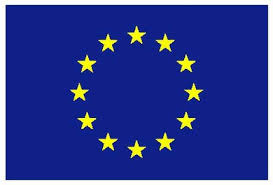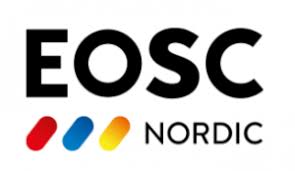EOSC-Nordic-hankkeen välituloksia | EOSC-Nordic interim results
(Please, scroll down to read in English.)
EOSC-Nordic-hanke on jatkunut jo reilun vuoden ajan ja sen työpaketit ovat saaneet aikaiseksi ensimmäiset tuloksensa. Työpaketti 2, jossa me olemme aktiivisia, on selvittänyt kunkin osallistujamaan avoimen tieteen ohjelmatyötä ja valtioiden sitoutuneisuutta tutkimuksen avaamiseen. Tätä tukee työpaketti 3:n selvitys avoimeen tieteeseen liittyvistä palveluista hankkeen osallistujamaissa.
Sisältöihin liittyen työpaketti 4 on tehnyt selvityksen hankealueen avoimen datan palveluiden FAIR yhteensopivuudesta ja kehittänyt sen arvioimiseksi FAIR kypsyysmallin. Hankkeen työpaketti 5 on puolestaan määritellyt paikallisia datahankkeita ja testannut niistä datan siirtoa EOSC-alustan ja yksittäisten palveluiden välillä.
Avoimen datan palveluiden hallinta
EOSC:n tavoitteena on luoda toimintaympäristö, jossa tutkijat voivat joustavasti käyttää avoimen tieteen palveluita ja ennen kaikkea tehdä uutta tutkimusta avattujen aineistojen ja menetelmien avulla.
EOSC-Nordicissa on tähän liittyen valittu 10 pilottia viideltä eri tieteenalalta, joissa testataan datan avaamista ja yhteiskäyttöä. Niissä tavoitteena on osoittaa, kuinka temaattiset portaalit voidaan käytännössä rakentaa hyödyntämällä EOSC:n tarjoamia tallennus ja tietojenkäsittelyresursseja varastointi- ja laskentaympäristön laajentamiseksi yksittäisille toimijoille.
Laajat infrastruktuurit nojaavat tällä hetkellä kansallisiin keskitettyihin ratkaisuihin — Suomessa esimerkiksi CSC — ja tavoitteena on näitä hyödyntämällä sekä tehostaa että laajentaa erityisesti avatun datan käyttöä saman tieteenalan sisällä.
Tämän toteuttamiseen liittyy paljon myös juridisia ja valtioiden ja organisaatioiden käytäntöihin liittyviä haasteita, joita näiden pilottitapausten avulla testataan ja selvitetään.
Mikä EOSC lopulta on?
European Open Science Cloud (EOSC) tulee vastaan yhä useammissa dokumenteissa, kuten UNIFIn avoin tiede ja data – toimenpideohjelma suomalaiselle tiedeyhteisölle, mutta mitä EOSC käytännössä tarkoittaa? Taustalla on globaali avoimen tieteen visio, jolla edistetään tieteen läpinäkyvyyttä, lisätään tutkimusdatan käyttöä ja vauhditetaan innovaatiotoimintaa. Euroopassa kansainvälistä avoimen tieteen visiota ryhdyttiin toteuttamaan ohjelmalla, joka sai nimekseen European Open Science Cloud, eli tuttavallisemmin EOSC. Se tarjoaa virtuaalisen ympäristön, jossa on avoimet ja yhteen toimivat palvelut tutkimusdatalle. Ympäristössä on mahdollista säilyttää, hallita, analysoida ja uudelleenkäyttää tutkimusdataa tieteenalasta riippumatta ja kansallisista rajoista välittämättä. Suurimpana pyrkimyksenä on yhdistää hajallaan olevat tutkimusinfrastruktuurit yhteentoimivaksi kokonaisuudeksi.
EOSC muodostuu erilaisista palveluista ja rajapinnoista. EOSC:n tarjoamilla palveluilla pyritään helpottamaan tutkimusdatan ja tutkimusjulkaisujen jakelua erilaisilla alustaratkaisuilla. Se on eräänlainen palveluiden markkinapaikka, josta tutkijat voivat valita haluamiaan palveluita ja/tai tarvittavia rajapintoja tietojen siirtämiseen järjestelmien välillä. Palvelusta löytyy jakamiseen, löydettävyyteen, analysointiin, datanhallintaan, tieteelliseen laskentaan, tallennukseen verkostojen hoitamiseen ja koulutukseen suunnattuja palveluita. Välttämättä emme tiedä käyttävämme EOSC-palveluita, kuten Eduroam, Zenodo, EUDAT-palvelut, CSC:n Pouta-palvelut ja Aila-portaali, muutamia esimerkkejä mainitaksemme. Lisäksi EOSC kokonaisuudesta löytyy turvallisuussertifikaatteja ja erilaisia rajapintoja, yhteensä lähes 300 erilaista palvelua. Tämän kokonaisuuden luomiseen on Horisontti 2020 -ohjelmasta jaettu lähes 600 miljoonaa euroa ja sitä tullaan rahoittamaan myös Horisontti Europe -ohjelmasta.
Palveluita tutkijoille, mutta miten?
EOSC tarjoaa viisi pääasiallista palvelua eurooppalaisille tutkijoille: yksilölliset tunnistus ja todennuspalvelut EOSC-palveluihin, suojatun ja personoidun työtilan, ajantasaista tietoa palveluista, toisten tuottamien tutkimusdatojen löydettävyys, saatavuus, uudelleenkäyttö ja analysointipalvelut sekä palvelut tutkimusdatan tuottamiseksi FAIR-kelpoiseksi sisältäen tallennuspalvelut ja pitkäaikaissäilytyksen. Suuren palvelukokonaisuuden haaste onkin saada tutkijat suuntaamaan palveluiden äärelle, eikä se onnistu ilman markkinointia ja palveluiden esittelyä. Saavutettavien tutkijoiden joukko on hyvin heterogeeninen ja viestin välittäminen osoittautuu varmasti haasteelliseksi. Viestiminen näistä palveluista lienee osittain jäänyt pohtimatta, ja toisaalta oikeanlaisen kielen, jota myös tutkijat ymmärtävät, löytäminen ei ole yksinkertaista. Tutkijat ja IT-asiantuntijat puhuvat usein samoista tarpeista eri termein, eikä kumpikaan välttämättä tule ymmärretyksi.


EOSC-Nordic has received funding from the European Union’s Horizon 2020 research and innovation programme under grant agreement No 857652
The EOSC-Nordic project has been proceeding for more than a year and its work packages have achieved their first results. Work Package 2, in which we are active, has explored the open science policy work of each participating country and the commitment of states to open up research. This is supported by the work being done in Work Package 3 on open science services in the participating countries.
In terms of content, Work Package 4 has conducted a study on the FAIR compatibility of open data services in the project area and developed a FAIR maturity model whereby it can be evaluated. Project Work Package 5, in turn, has identified local data projects and tested data transfer from them between the EOSC platform and individual services.
Management of open data services
The aim of the EOSC is to create an environment where researchers can flexibly use the services of open science and, above all, to carry out new research using open resources and methods.
In this context, EOSC-Nordic has selected 10 pilots from five different disciplines to test data opening and sharing. They aim to show how thematic portals can be built in practice by leveraging the storage and computing resources provided by the EOSC to extend the storage and computing environment to individual actors.
Extensive infrastructures currently rely on national centralized solutions – in Finland, for example, CSC – and the aim is to utilize these both to increase the efficiency and to expand the use of open data, especially within the same discipline.
There are also many legal and policy and governmental challenges to be overcome in achieving this goal; these will be tested and clarified through the pilot cases.
What is ultimately the EOSC?
The European Open Science Cloud (EOSC) is mentioned in more and more documents, such as UNIFI’s (Universities Finland, co-operational organization for Finnish universities) Open Science and Data – Action programme for the Finnish Scholarly Community, but what does the EOSC mean in practice? The underlying theme is a global vision of open science that promotes transparency in science, increases the use of research data and fosters innovation activity. In Europe, this vision was implemented through a program called the European Open Science Cloud, or more familiarly EOSC. It provides a virtual environment with open and interoperable services for research data. In this virtual environment, it is possible to store, manage, analyse and re-use data regardless of discipline or national borders. The main goal is to combine decentralized research infrastructures into an interoperable entity.
The EOSC consists of various services and application programming interfaces. The services provided by EOSC aim to facilitate the distribution of research data and research publications through various platform solutions. It is a kind of marketplace for services from which researchers can choose the services they want and/or the interfaces for transferring data between systems. The marketplace includes services for sharing, discoverability, analysis, data management, scientific computing, storage, network management and training. We may not be aware that we are even using EOSC services – these are Eduroam, Zenodo, EUDAT services, CSC’s Pouta services and the Aila portal, to name just a few examples. In addition, the EOSC entity includes security certificates and various application programming interfaces, for a total of nearly 300 different services. Almost €600 million has been allocated from Horizon 2020 to create this entity and it will also be funded under Horizon Europe.
Services for researchers, but how will these be provided?
The EOSC provides five main services for European researchers: a unique identification and authentication service and an access point and routing system towards the EOSC services, a protected and personalized work environment, access to relevant service information, services to find, access, re-use and analyse research data generated by others and services to produce research data in a FAIR-compliant manner including storage services and long-term preservation. The challenge of a large set of services is to encourage researchers to use the services. This will not be possible without marketing and promoting the services. The pool of researchers to be reached is very heterogeneous and getting a message across to so many researchers is challenging. Communicating about these services may have been partly overlooked and, on the other hand, finding the right kind of language that researchers also understand is not simple. Researchers and IT specialists often talk about the same needs, but in different terms, and may not necessary be understood by the other party.
Jarmo Saarti, kirjastonjohtaja | Library Director
Tomi Rosti, tietoasiantuntija | Information Specialist
Opetus- ja tietopalvelut | Training and Information Services